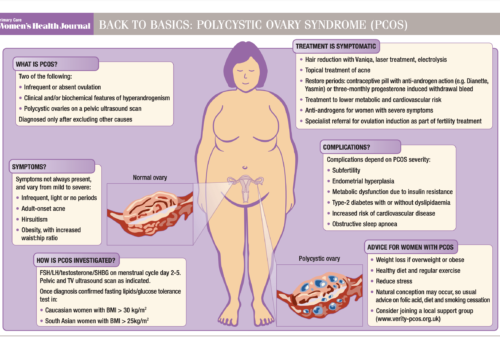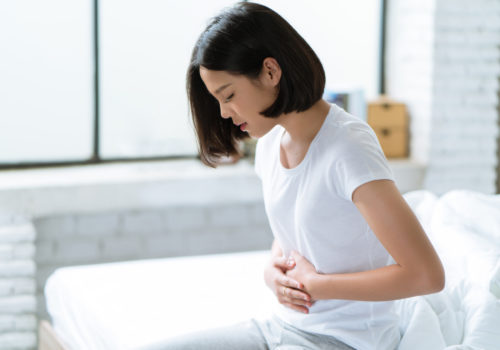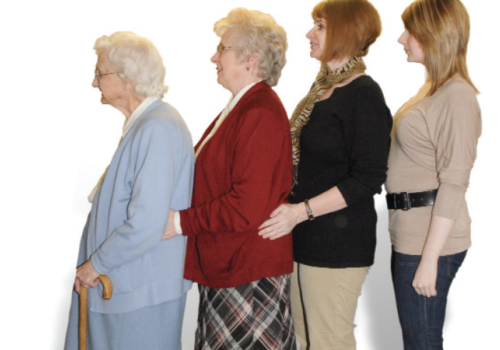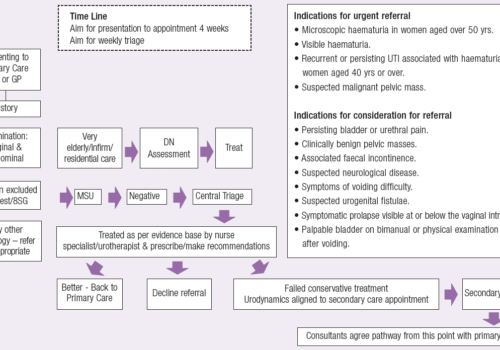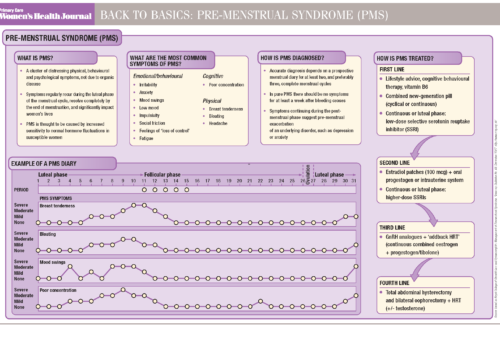All women have vaginal discharge, some more than others. But it is usually a change in the amount or type of discharge that causes a woman to consult her GP or practice nurse. This article explains how to distinguish between normal and pathological vaginal discharge, and how to choose the approach most likely to reassure the patient and resolve her symptoms.
Back to Basics: Polycystic ovary syndrome (PCOS)
HPV vaccination: an injection of success in primary care
Since the human papilloma virus (HPV) vaccination programme was introduced in autumn 2008, most PCTs have been very successful in reaching the routine target group of girls aged 12-13 years. It has been more challenging to deliver the vaccine to older girls but, as this article explains, both patients and practices can benefit if vaccination is offered as part of more general health promotion.
Lifting the curse: NICE’s approach to heavy periods
Heavy periods have a major impact on a woman’s quality of life. In the past, hysterectomy was the firstline treatment. But there is now a wide range of NICE-endorsed options that very effectively lift the curse of heavy menstrual bleeding.
Going with the flow in urodynamics
Women presenting with urinary incontinence can often be successfully treated in primary care with bladder retraining, pelvic floor muscle exercises and anticholinergic medication as appropriate. But some do not respond to conservative treatment and need referral to secondary care for investigation with urodynamics.
Could it be early menopause?
A 40-year-old woman with hot flushes, tearfulness and low libido could be going through early menopause. But there might be other explanations for her symptoms, and a careful history and investigation are essential to ensure that she receives the right treatment.
Is there really an alternative to HRT?
Hormone replacement therapy (HRT) is the most effective treatment for menopausal symptoms, but bad publicity means that women ask about other options. This article outlines practical steps to help to minimise mild symptoms, and assesses the evidence for complementary and prescribed alternatives to HRT.
Hitting the treatment target in osteoporosis
For too long a Cinderella condition, osteoporosis has only recently been included in the GP contract as a Directed Enhanced Service. This article explains how the new FRAX tool can help practices to individualise risk assessment and target treatment to the patients most at risk.
A new pathway to progress in continence care
All too many women with urinary incontinence are referred to secondary care when they could be assessed and successfully treated by their GP, practice nurse or local primary care continence advisor. This article explains how one PCT introduced a local pathway that has changed professional behaviour, and proved popular with both professionals and patients.
Back to Basics: Pre-menstrual syndrome
Preventing unplanned pregnancy: no lottery with LARCs
Despite NICE guidelines, long-acting reversible contraceptives (LARCs) remain little used in the UK, but this looks set to change with their inclusion in this year’s new Quality and Outcomes Framework contraception indicators. The author reviews the currently available LARCs, and discusses how to tailor choice to the needs and preferences of each woman.
Nurses lead the way: achieving new QOF contraceptive targets
In order to comply with NICE guidance and achieve new QOF indicators, general practices must offer women a choice of contraception, including long-acting reversible methods. But practices may struggle if GPs have not maintained their competencies in fitting these devices. The author explains how nurse-led clinics can both enhance services for women and help practices achieve targets.


